3.2 Exporting and Importing Predefined Applications and Application Definitions
SecureLogin provides export and import functionality to facilitate distribution of predefined applications and application definitions. Converting predefined applications and application definitions to XML format allows you to distribute and deploy predefined applications and application definitions across directories, software, and hardware platforms.
This section contains the following information:
3.2.1 Export Using an XML File
You can manage application definitions for applications by using the iManager, the Microsoft Management Console (MMC) or the SecureLogin Manager (slmanager.exe).
To export SecureLogin data using an XML file through iManager, do the following:
-
Log in to iManager.
-
In the object field, specify your object name, then click .
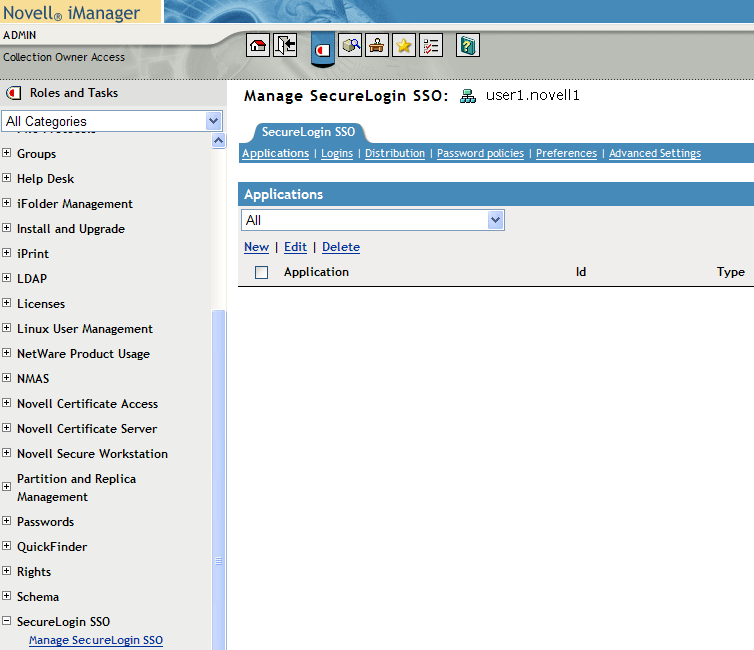
-
Click D. The distribution details are displayed.
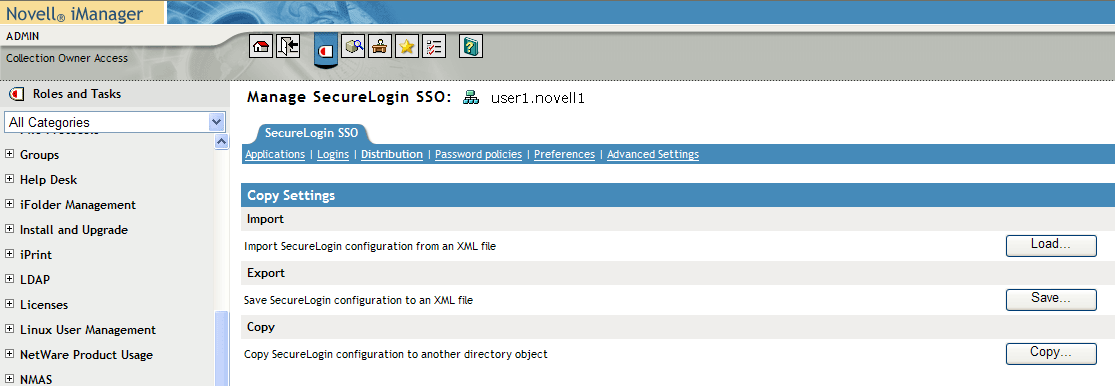
-
Click . The save dialog box is displayed.
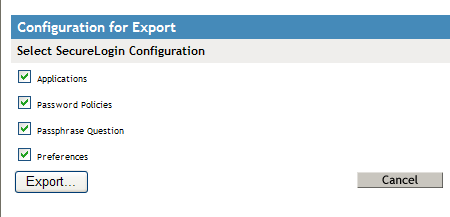
-
In the section, do the following:
-
Select .
-
Clear the other check boxes.
-
Select in the section.
NOTE:This option is not present for iManager.
-
-
Click E. The Do you want to open or save dialog box is displayed.
-
Click . The save dialog box is displayed.
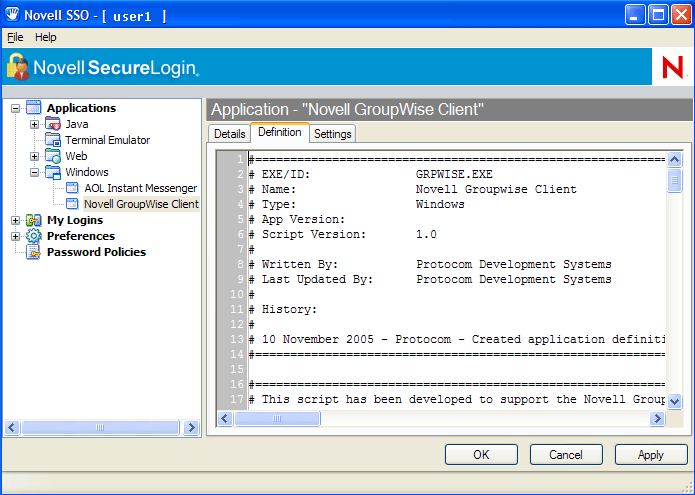
-
Select the file location and specify a file name in the field.
-
Make sure XML document is selected in save as type.
-
Click . The SecureLogin confirmation message is displayed.
-
Click .
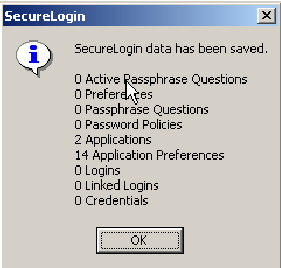
3.2.2 Importing in XML Format
Use the following procedure to import SecureLogin data in XML format:
-
Log in to iManager.
-
Select . The Manage SecureLogin SSO page is displayed.
-
In the object field, specify your object name, then click .

-
Click . The Distribution details are displayed.

-
Click . The Load dialog box is displayed.
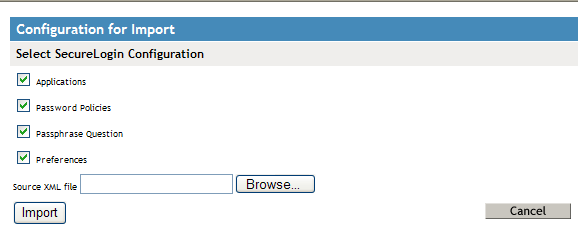
-
In the dialog box do the following:
-
Select the check box.
-
Clear the other check boxes.
-
-
Browse and select the exported XML file.
-
Click to select the file.
The selected:
- Predefined applications and application definition are copied across to the receiving organizational unit or container.
- Securelogin configuration is copied across to the receiving object.
If a predefined applications and application definition currently exists in the receiving object, a confirmation message is displayed to confirm or reject overwrite with the imported data.

-
Click to confirm or click to reject overwriting with the imported data.
-
A SecureLogin message is displayed to confirm SecureLogin data is loaded.
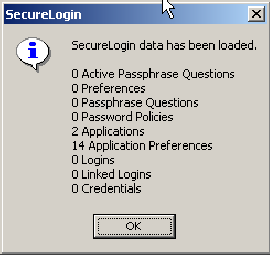
3.2.3 Modifying in the Personal Management Utility
SecureLogin predefined applications and application definitions are easily modified to cater to your organization's requirements.
Use the following procedure to modify a SecureLogin predefined application or application definition.
-
Double-click the SecureLogin system tray icon to display the Personal Management Utility.
-
Click . The Applications pane is displayed.
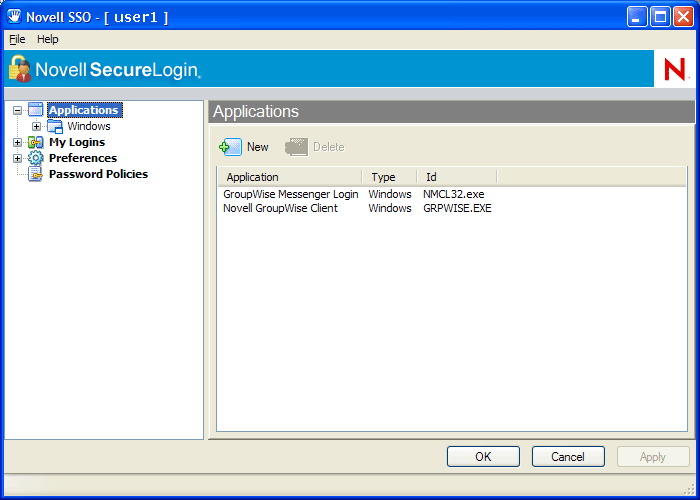
-
Double-click the required application definition. The application details are displayed.
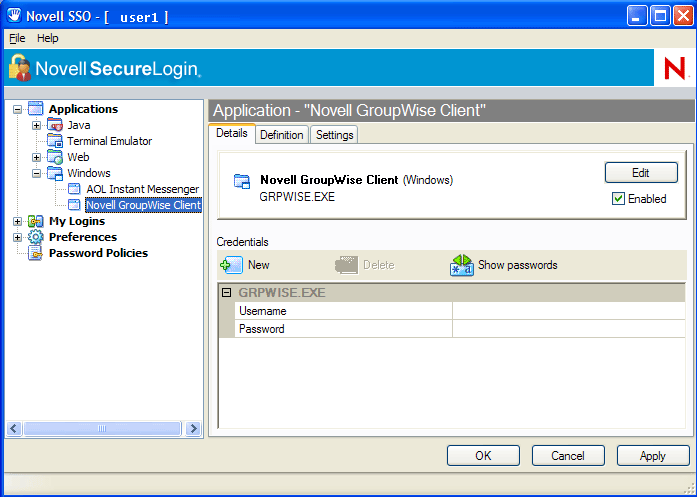
-
Select the tab. The Application Definition editor is displayed.

-
Modify the application definition or the predefined application, as required.
NOTE:It is a good practice to include the date and a description of the changes made for future reference.
-
Click to save changes and close the Personal Management Utility.
For information on how to modify specific functions see, Section 5.0, Command Reference.
3.2.4 Building an Application Definition in the Personal Management Utility
This section describes how to create and modify SecureLogin application definitions in the Personal Management Utility. It is recommended that you test the application definitions locally and then copy them to the relevant container or organizational unit in multi-user directory environments.
Use the following procedure to create an application definition for a Windows application.
-
Double-click the SecureLogin system tray icon to display the Personal Management Utility.
-
On the File menu, point to , and then click . The New Application dialog box is displayed.
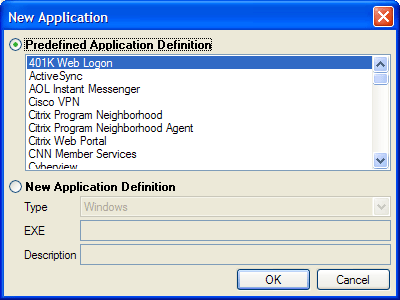
-
Click , and select the required application type from the drop-down list.
-
Specify the name of the application executable for Windows* applications in the field.
-
Specify a description and click . The application definition is added to the left pane under applications and the details display in the right pane.
-
Select , and delete the text, # place your application definition here.
-
Specify your application details, and click to save the changes and close the Personal Management Utility.
NOTE:If you are creating multiple application definitions, click to save changes without closing the Personal Management Utility.
Settings Tab
The Settings tab includes the following Advanced options for application definitions and predefined applications.
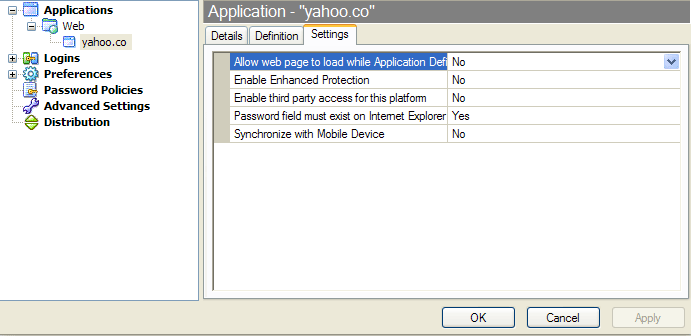
The following table lists the options in the Settings tab:
Table 3-1 Settings Options